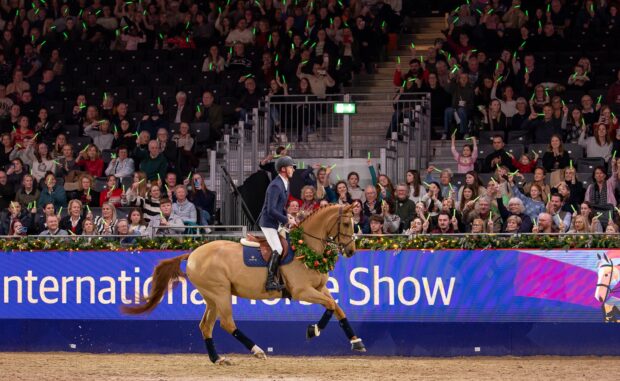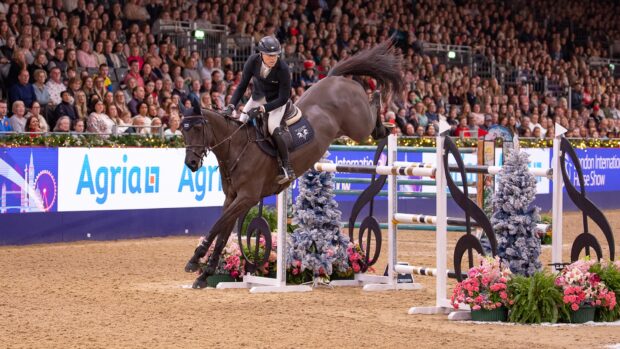Top pony producer Julie Templeton shares her views on tight ticket allocations and low entries in plaited classes
I’ve noticed a few trends now that the Horse of the Year Show (HOYS) qualifiers are well and truly underway. Mountain and moorland classes seem to be thriving, yet show secretaries must be tearing out their hair at the quantity of entries in the plaited classes.
Historically, securing HOYS qualifiers for your show would guarantee its success and profitability. A few years ago, it was commonplace for there to be 20-plus entries forward at the earlier qualifiers. Even in plaited ranks pre-Covid, you’d expect to have entry numbers well into the teens. However, after analysing the entries at these first HOYS qualifiers, to have more than 10 competitors forward in any plaited horse or pony class would be an exception to the rule.
Bizarrely, though, lead-rein of hunter type classes have been consistently well attended. At the Royal Highland, there were 24 combinations in the ring, probably making it the biggest plaited class of the year so far. I pondered why this may be the case as the Royal Highland is one of the furthest north shows. Does this mean that competitors are not being discouraged by diesel costs after all? The show also boasts an incredibly buzzy atmosphere, not suited to all animals, but competitors were not put off by this.
Unfortunately, I can’t reach a conclusion as to why this particular class proved so popular and I am, therefore, still working on considering what aspects might help other classes in the future.
Insufficient tickets for support teams
On the subject of the Royal Highland, I was disappointed when I was only given three complimentary entry tickets for the three classes that we had entered.
After checking this was correct, we tried to buy more, but were told the tickets were sold out. So after driving several hundred miles, this technically meant that only the three riders could get into the show and that myself, the parents and siblings had to wait in the horse park. I’m not quite sure how these children were expected to manage in the conformation section on their own without a groom.
In the end, we borrowed a rider for a class and we had a friend with a tradestand who helped us.
Ticket designation at county shows has always been a contentious issue, but given the decrease in showing numbers, perhaps shows could consider being a little more generous when putting together show packs and allocating tickets. We must encourage families to compete by allowing them to enjoy a day out at the show.
The intermediates debate
My fellow columnist Stuart Hollings mentioned the new intermediate rulings in his recent column. I concur with his thoughts that intermediate competitors are being discouraged from entering HOYS show riding type sections, given the new format brought in this year. To date, there have been seven intermediate qualifiers and the numbers forward definitely seem to attest to this theory, as not one single class in either section has had more than nine exhibits.
I’ve previously stated that I feel the way to improve the intermediate numbers is to redefine the classifications as intermediate of hack, riding horse and hunter type, which makes far more sense than classifying them by height. It allows the judge the opportunity to assess exhibits of a similar type and stamp and it could encourage riders to think to the future and the possibility of making the transition into horse classes.
Regardless of the intermediate changes, it is apparent that plaited classes are in decline across the board. It is going to take some joined-up thinking from competitors, societies, producers and organisers to turn it around.
● Have you been left stuck without tickets to a county show? Write to us at hhletters@futurenet.com, including your name, nearest town and county, for the chance to have your views published in a future edition of Horse & Hound magazine
- This exclusive column will also be available to read in Horse & Hound magazine, on sale Thursday 13 July, 2023
You may also be interested in reading…

Stuart Hollings: ‘Will new intermediate show riding type qualifying system cut entries?’

H&H’s guide to intermediate showing classes: which class should you go in and how to turnout

‘It’s a good job I’m obsessed’: an exclusive look behind the scenes at this top horseman’s yard

Subscribe to Horse & Hound magazine today – and enjoy unlimited website access all year round
Horse & Hound magazine, out every Thursday, is packed with all the latest news and reports, as well as interviews, specials, nostalgia, vet and training advice. Find how you can enjoy the magazine delivered to your door every week, plus options to upgrade your subscription to access our online service that brings you breaking news and reports as well as other benefits.




